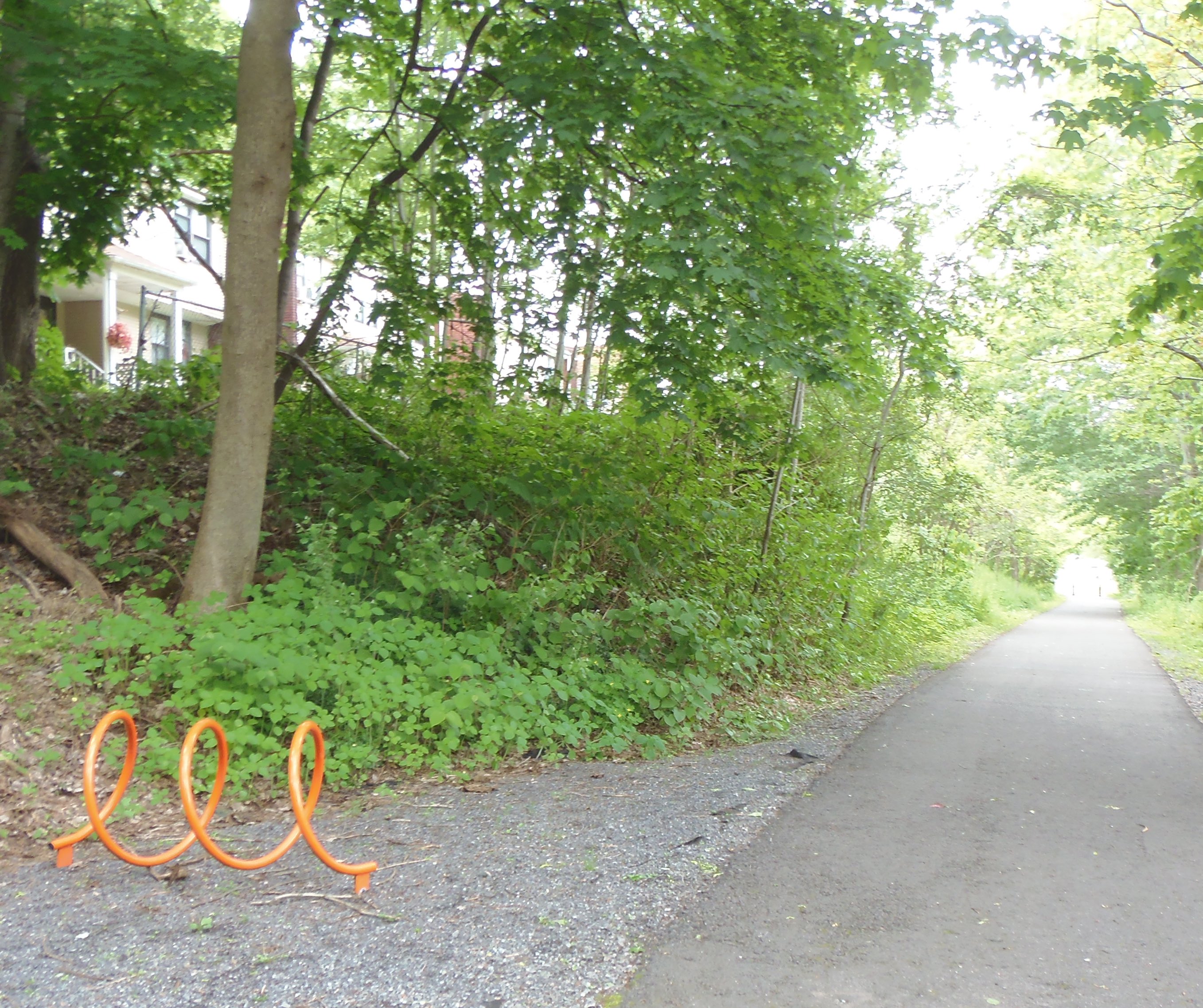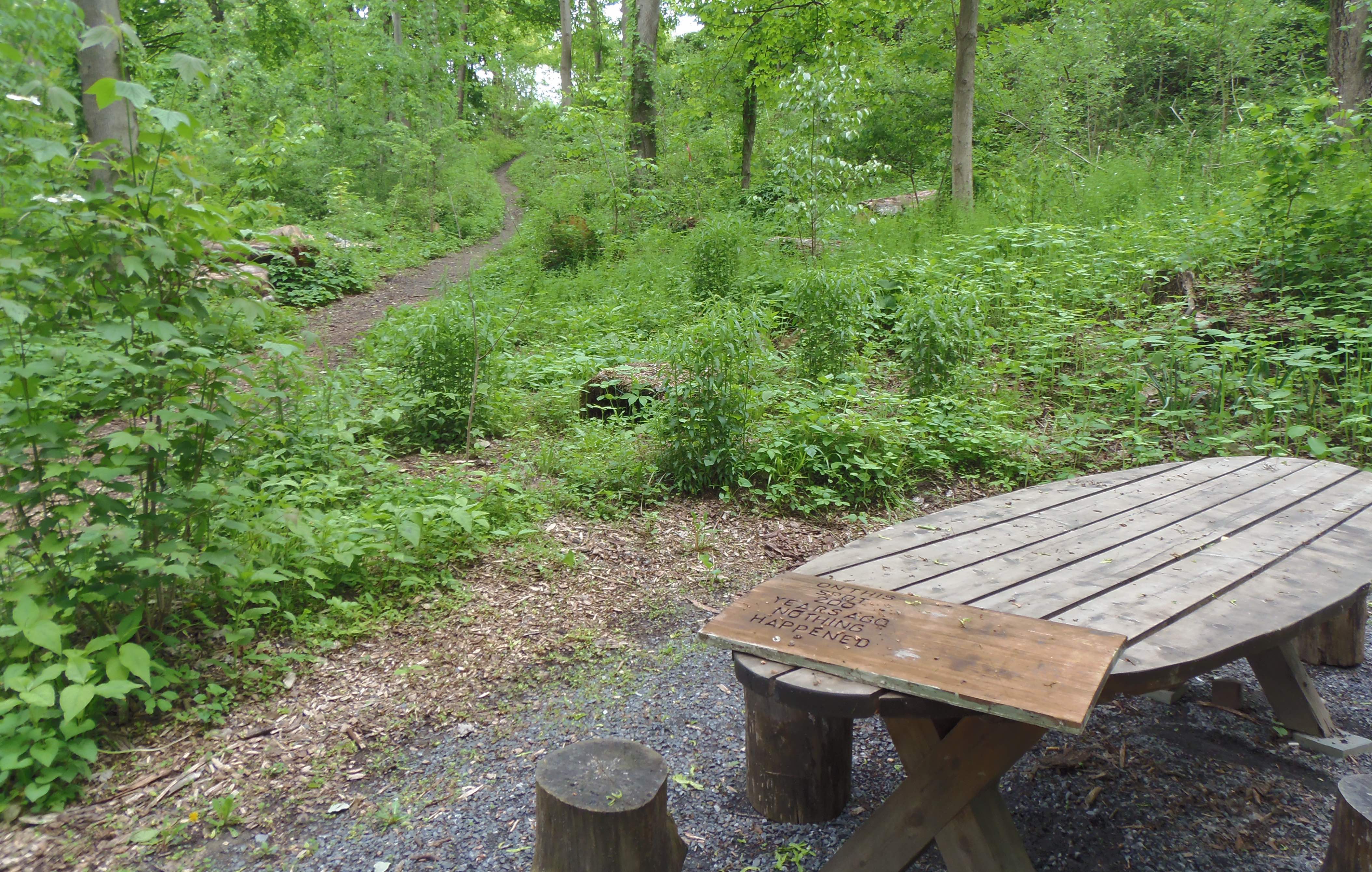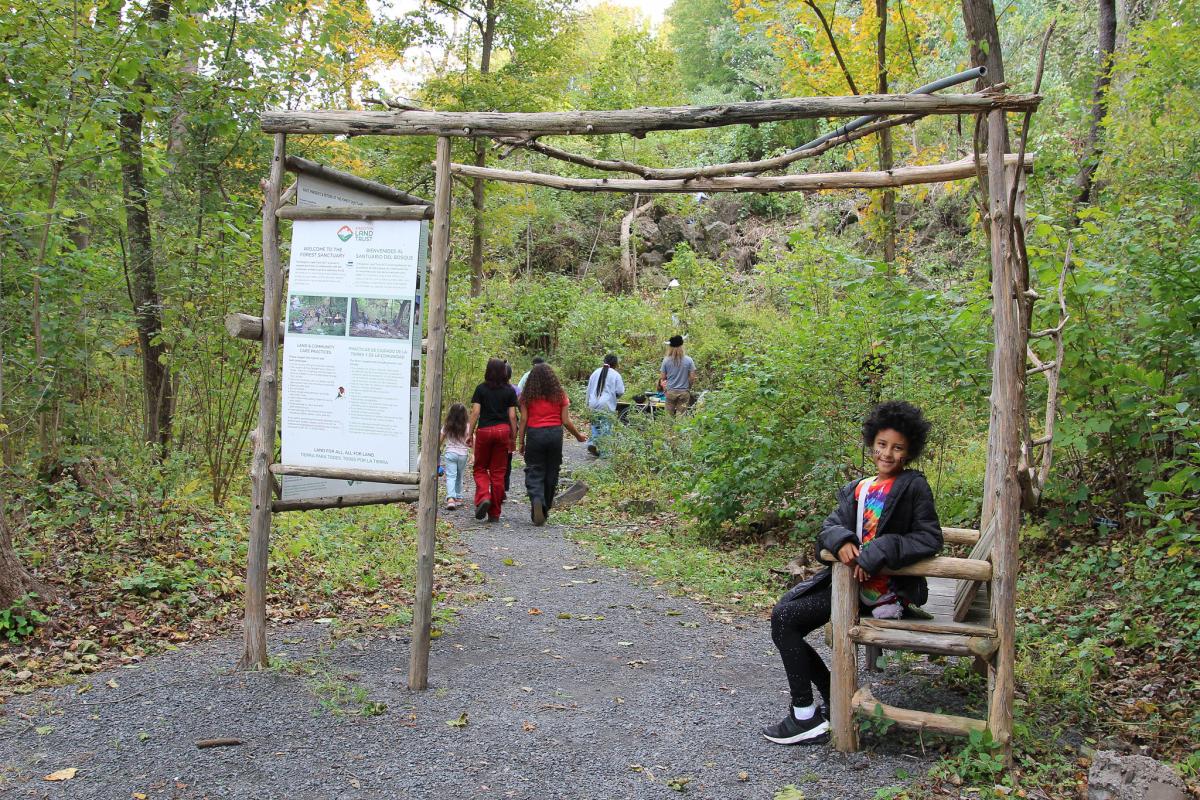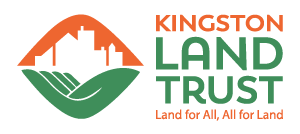The Forest Sanctuary is a small section of forest being revegetated with native and edible plants to be stewarded and foraged by the surrounding community.

GETTING THERE
The Forest Sanctuary is located along the Kingston Point Rail Trail / Kingston Greenline in between Delaware Ave and Rondout Gardens (71 Gross St.) It is accessible by bike, foot or car if you choose to use streetside parking on Gross St.
THE POLLINATOR GARDEN
At the top of the slope in the sanctuary is a pollinator garden created and maintained in partnership with Hudson Valley Bee Habitat.

EDIBLE LANDSCAPING
The Sanctuary is being revegetated with many native edible plants such as, Paw Paw and Hickory trees, Black Currant, Raspberry, and Elderberry bushes. As these plants mature they will be available for public foraging.

THE SIGNS PRESENTED AT THE FOREST SANCTUARY
See below for expanded versions of the information on the "Past, Present, and Future of the Forest Sanctuary" sign mounted in the welcome arbor at the lower entrance on the Kingston Point Rail Trail.

